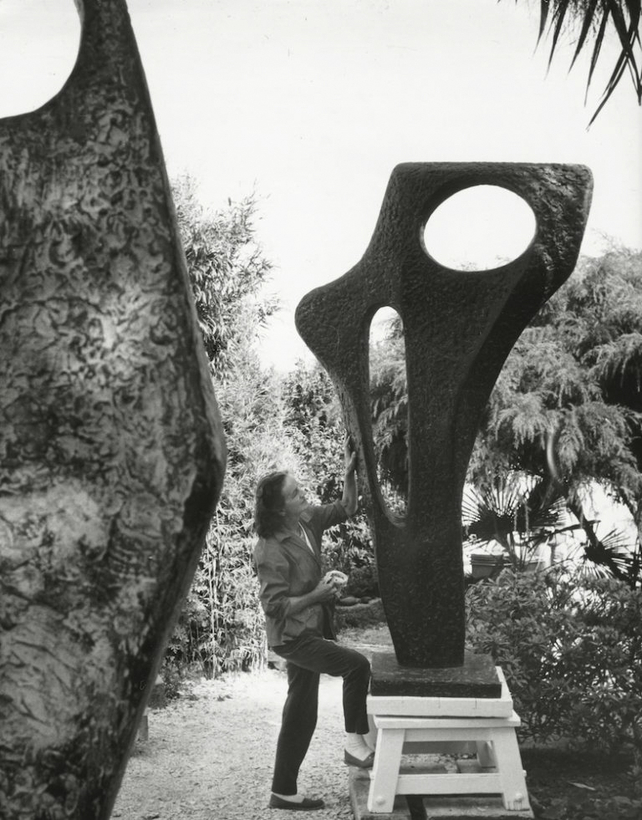Imagine seeing Claude Monet’s water-lily paintings not in the Musée de l’Orangerie but at his home at Giverny, in Normandy, where they were painted and whose lush grounds and elaborate landscaping form their subject. You would not only see—indeed, inhabit—the views that had inspired him, but by toggling between the artwork and its source in nature you would more deeply understand the workings of the creative imagination. An aesthetic experience of that order is now available at Tate St. Ives, in Cornwall, England, which has just opened “Barbara Hepworth: Art & Life,” on view through May 1, 2023.

Nominally a retrospective of the British sculptor’s work, the show, organized by the Hepworth scholar Eleanor Clayton, emphasizes the transformative impact that locale had on her art. Hepworth moved from London to St. Ives in late August of 1939. She could thus be said to have had a “good war,” since it was in St. Ives that she produced her finest work.
Hepworth (1903–75) and her contemporary Henry Moore (1898–1986) were the greatest British sculptors of the 20th century. She, though, had the added distinction of being one of the few women modernists to achieve recognition in the years before the feminist movement. By the mid-1950s, Hepworth was enough of a household name that the satirical weekly Punch could make her the subject of a cartoon.

She was a carver who embraced the modernist credo of “truth to materials.” Sculptors of the past had aimed to make marble resemble flesh and fabrics. But Hepworth’s generation, influenced by the work of Constantin Brâncuși, instead emphasized the innate character of their materials—the “stoniness” of stone and the flow of grain in wood. She was also an abstract artist, moving easily between its two main currents, the organic and the geometric.
Hepworth’s early work shares many of the formal and thematic concerns of her fellow modernists (the human figure, for example) but can often feel derivative. In St. Ives she would find a new subject—nature—and her own distinctive voice.
The art historian Alan G. Wilkinson has described Cornwall as having “spectacular cliffs, headlands and caves … rock formations rising out of the sea [and] massive boulders deposited on hill tops.” In this dramatically suggestive environment, Hepworth was quickly gripped by a Monet-like need to turn landscape into art.

The resulting works are not literal representations but abstract evocations of Cornwall’s essential qualities: light, land, the action of the tides, the pooling of water in bays and coves, and the sculpture-like carving out of its caves. Pelagos (1946), a deeply hollowed elmwood sphere with a painted interior, suggests the flow of water, cyclical time, enclosure and containment, along with much else. In this work and others, Hepworth recasts the 19th-century English Romantic tradition, which saw in nature not just beauty but a life force, in the language of 20th-century modernism. Other British artists responded to nature in their work, but none did so as creatively or poetically as Hepworth. —Eric Gibson
“Barbara Hepworth: Art & Life” is on view at Tate St. Ives, in Cornwall, England, through May 1, 2023
Eric Gibson is The Wall Street Journal’s Arts in Review editor and the author of The Necessity of Sculpture


 Discover
Discover